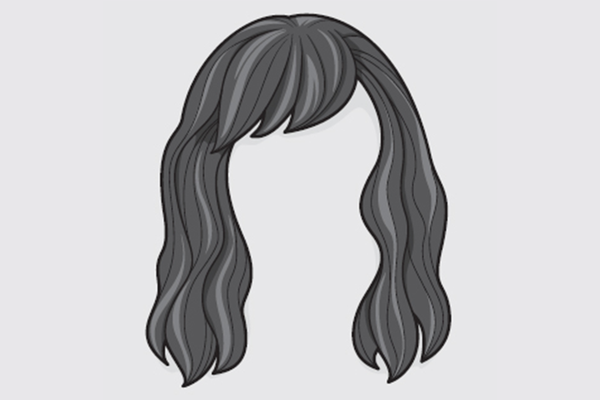Graphene seems to be a gift that keeps on giving. This much hyped material, which consists of a one-atom-thick layer of carbon and is the basic unit of graphite, is known for its strength, conductivity and other useful properties. It holds promise for a slew of futuristic uses, from high-capacity batteries to lighter and stronger aircraft wings. It is slowly finding its way to market in conductive inks and specialty sports gear. But other proposed applications are closer to home: some researchers think graphene could revamp everything from personal care to footwear.
NANO HAIR DYE
Graphene sheets can cling to one another and appear black, as graphite does. So could they be used to color hair? To find out, materials scientist Jiaxing Huang and his colleagues at Northwestern University mixed graphene flakes in water with chitosan, an edible sugar made from crustacean shells. When they brushed the resulting ink on blond hair samples, the pliable flakes wrapped tightly around the hairs' curved surfaces; the chitosan glued the carbon in place by binding with the hair protein keratin. The dye lasted for 30 washes, the researchers reported in April in Chem.
On supporting science journalism
If you're enjoying this article, consider supporting our award-winning journalism by subscribing. By purchasing a subscription you are helping to ensure the future of impactful stories about the discoveries and ideas shaping our world today.
Store-bought permanent dyes work via a string of chemical reactions “using your head as a flask,” Huang says. The harsh chemicals can damage hair and irritate skin. Graphene's possible health and environmental risks are still being studied, but the dye is nonabrasive, and the flakes are too large to enter human pores, Huang notes. And the material's resistance to electrostatic charge bestows a nice side effect: it fights frizz.
ELECTRONIC ID TAGS
Credit: Brown Bird Design
Zap fabric or food with a laser, and it chars. By doing so in a carefully controlled way, researchers rearranged carbon atoms in natural materials into graphene. As described in a study published online in February in ACS Nano, scientists seared graphene patterns into cloth, paper and even bread. This technique could potentially etch electronic circuits that would act as biodegradable radio-frequency identification (RFID) tags for tracking apparel or banknotes. It could also create edible sensors that would indicate if fruit was ripe or contaminated.
Rice University chemist James Tour, the study's senior author, says the laser's intense light and heat rearrange carbon atoms and form bonds among them. Multiple passes are key. An initial blast singes the material to create amorphous carbon, or soot. Subsequent passes organize the atoms into graphene's signature honeycomb pattern.
FANCY FOOTWEAR
Credit: Brown Bird Design
Extra-gripping graphene shoes may be sprinting into stores this year. British sportswear company Inov-8 plans to sell running shoes that have rubber soles spiked with the wonder material, which should make them stronger and more flexible.
Italian shoemaker Fadel has gone a step further. Teaming up with researchers at the Italian Institute of Technology in Genoa, the company added graphene to its Freshoes sandal outsoles and insoles. The material purportedly imparts antimicrobial properties and wicks away heat, keeping feet fresh and cool.
